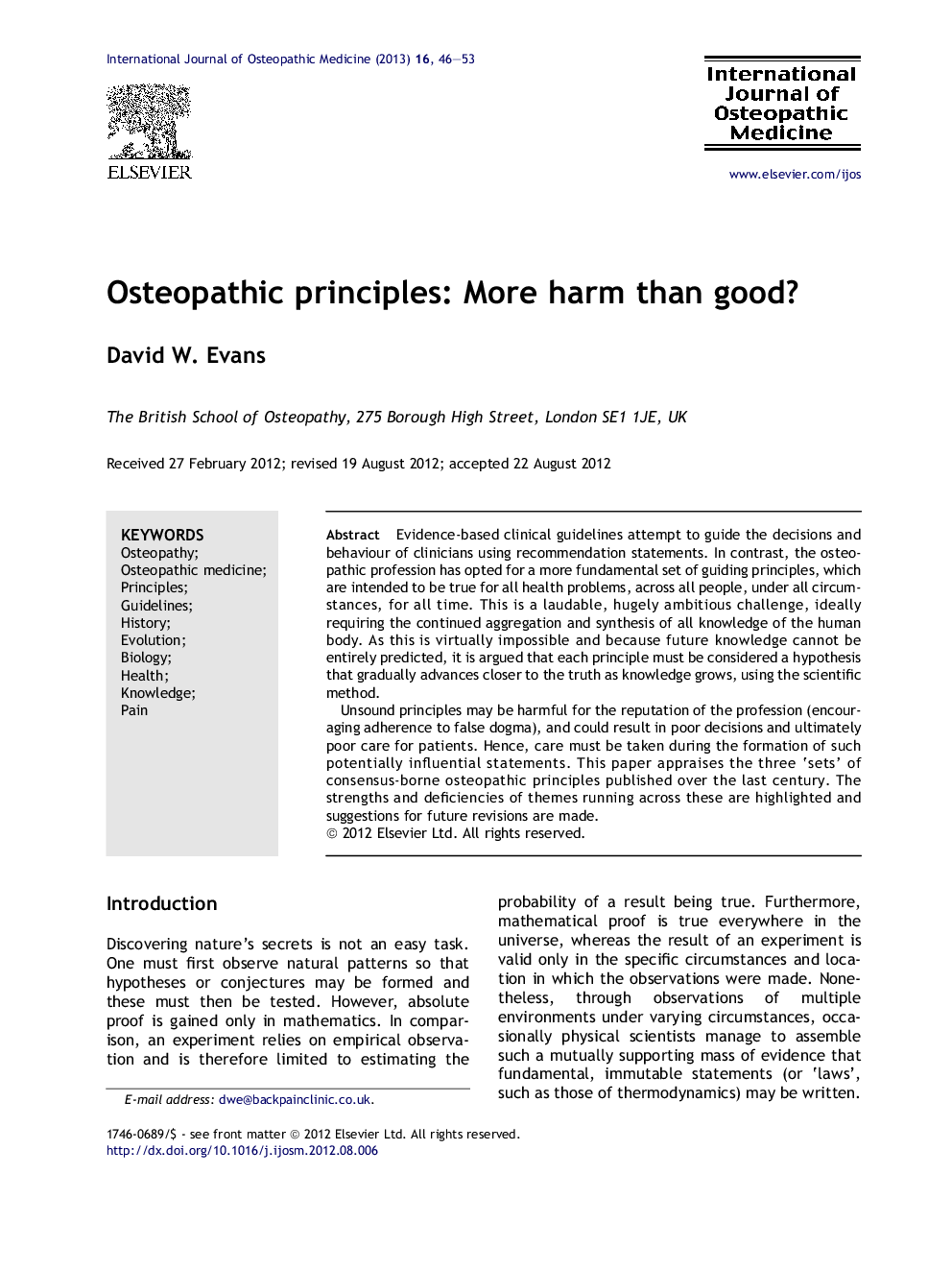| Article ID | Journal | Published Year | Pages | File Type |
|---|---|---|---|---|
| 2618614 | International Journal of Osteopathic Medicine | 2013 | 8 Pages |
Evidence-based clinical guidelines attempt to guide the decisions and behaviour of clinicians using recommendation statements. In contrast, the osteopathic profession has opted for a more fundamental set of guiding principles, which are intended to be true for all health problems, across all people, under all circumstances, for all time. This is a laudable, hugely ambitious challenge, ideally requiring the continued aggregation and synthesis of all knowledge of the human body. As this is virtually impossible and because future knowledge cannot be entirely predicted, it is argued that each principle must be considered a hypothesis that gradually advances closer to the truth as knowledge grows, using the scientific method.Unsound principles may be harmful for the reputation of the profession (encouraging adherence to false dogma), and could result in poor decisions and ultimately poor care for patients. Hence, care must be taken during the formation of such potentially influential statements. This paper appraises the three ‘sets’ of consensus-borne osteopathic principles published over the last century. The strengths and deficiencies of themes running across these are highlighted and suggestions for future revisions are made.
